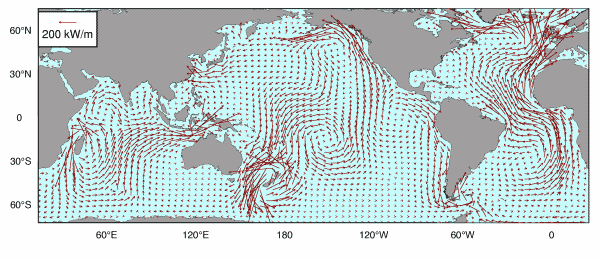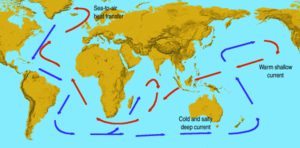Tides and climate
Tides have long been considered as a high frequency phenomenon which was supposed to be limited to continental shelves. Tides were not likely to interact with the oceanic general circulation and thus on the climate's low frequency dynamic. Since altimetric data and global tidal hydrodynamic solutions have reached a centimetric resolution, a connection between tides and climate is now conceivable.
Ocean waters are stratified according to their density. The different layers mix with difficulty. However the tidal currents coming into contact with the relief of the ocean bottom (even if this is very deep) creates waves which are propagated at the interface between two layers of different densities. It is currently thought that this mechanism contributes more than half of the vertical mixing of water masses. Now this mixing is fundamental for large-scale ocean circulation (thermohaline circulation) which enables the redistribution of heat from the equator to the poles.
Since 1992, Topex/Poseidon has been providing highly precise altimetry measurements which has made it possible to map the energy dissipated by tides. As was previously thought, part of this energy is dissipated in coastal regions through friction with the bottom of the sea, but is has also been observed that a significant part of the energy (one third) is dissipated in the deep ocean. This discovery in turn shed some light on the possible role of tides in thermohaline circulation.






